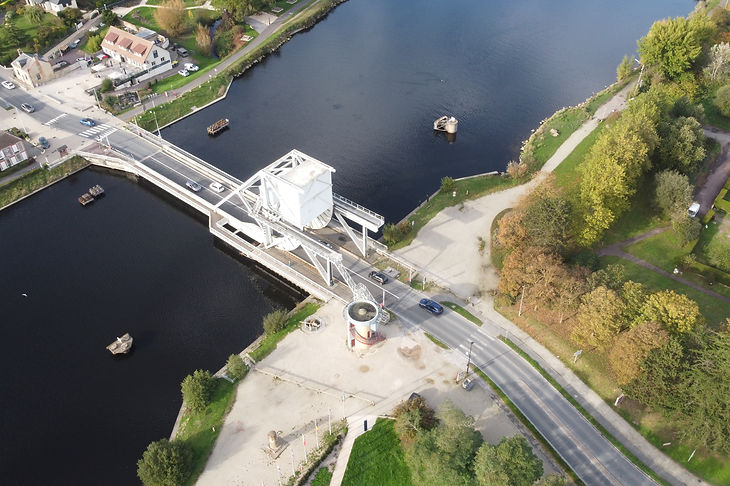
Wn13 Benouville 'Pegasus Bridge'
Bridge secured by British paratroopers on D-Day

Wn13 site overview

What to see
Capture of bridges over major rivers were key objectives for Allied forces landing on D-Day and few were as vital as the bridge at Benouville over the Caen Canal - now known as Pegasus Bridge after the emblem worn by the British forces who secured the site and the nearby bridge over the Orne river.
The men - 181 of them - were from the 6th Airborne Division the Ox and Bucks Light Infantry who landed via six gliders, three near each of the bridges, at 00:17 hours on June 6 with the mission to capture them and prevent German reinforcements from entering the Allied landing beach areas to the west. It was an objective they completed within 10 minutes of landing due to an incredible piece of flying, hard fighting, and the element of surprise.
The attack on the bridges was led by Major John Howard and there's a memorial to him at the exact spots where the gliders landed - you can see just how close they got!
Of course the bridge of the canal now is a not the original as the canal was widened and made the bridge obsolete. The original bridge - complete with its D-Day battle scars - was replaced by the new bridge in 1994, an incredible 50 years after that famous day and is now located and preserved inside the Memorial Pegasus Museum just a few yards away.
The pinpoint landing of the first Horsa glider was described as the greatest piece of flying of the Second World War.
Defending the site on D-Day was a series of trenches and a single Ringstand armed with a 5cm KwK anti-tank gun - possibly the first German position to be be taken on D-Day and you can still see the original gun in its emplacement just a few yards from the bridge.
Across the bridge is the Cafe Gondree, a one of the first buildings to be liberated in France.
Gallery




